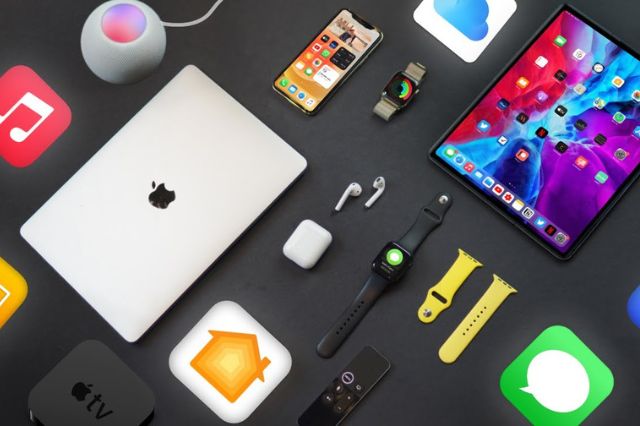Exploring Apple’s Technological Ecosystem: A Comprehensive Guide

Apple devices are renowned for their functionality and high performance, but above all, they are celebrated for their seamless integration with one another. Thanks to this integration, the experience of using Apple devices can smoothly transition from working on a computer to a tablet or smartphone.
Let’s delve into how this ecosystem operates, analyze its fundamental elements, including the availability of apple wholesale replacement parts, and assess its impact on consumers and the technological market. This will help provide a thorough understanding of the company’s distinctive approach to developing and promoting its solutions.
Historical Background
The Apple ecosystem began to take shape in the late 1970s with the release of the first Apple II personal computer. In 1984, the revolutionary Macintosh computer was introduced, marking a significant turning point in its time.
Throughout the 1980s and 1990s, Apple actively expanded its ecosystem by introducing new devices (printers, monitors, peripherals), software, and the global AppleTalk network to interconnect Apple products.
A new phase commenced in 2001 with the launch of the iPod player and the iTunes store, laying the groundwork for Apple’s mobile ecosystem. In 2007, the iPhone was introduced, bringing about a radical transformation, both for the company itself and the gadget market.
Today, the Apple ecosystem encompasses a wide array of hardware and software products, all intricately integrated for user convenience.
Apple Hardware Devices
Apple’s lineup of devices includes iPhone smartphones, iPad tablets, Mac personal computers, Apple Watch smartwatches, and other products. Each of these categories boasts a distinct and recognizable design, excellent technical specifications, and regular updates.
For instance, the current iPhone lineup comprises eight devices, ranging from the budget-friendly SE 2022 to the flagship 15 Pro Max. The iPad is available in four iterations, including the basic 10-inch model, the compact mini, the advanced Air, and the cutting-edge Pro.
The Mac product line continues to expand as well. In 2021, the MacBook Pro 14 and 16-inch models were introduced with enhanced performance and displays. Recently, the Mac mini with the M2 chip and the first updated Mac Pro in many years were also announced.
The Apple Watch has become an integral component of the ecosystem, with its functionality and popularity steadily growing each year. In addition to the standard series and the SE version, there is also the Ultra model, tailored for professionals and athletes.
Apple adheres to a strategy of systematically replacing all components with in-house developed solutions. This approach enables further enhancement in hardware optimization for macOS, iOS, and iPadOS, fostering even swifter interactions among devices.
Apple’s Software and Services
One of the most critical components of the Apple ecosystem is its software. The operating systems — iOS, iPadOS, macOS, and watchOS — facilitate communication among various devices, providing a unified user experience.
For example, the ecosystem enables users to:
- respond to iPhone messages directly from a Mac;
- utilize an Apple Watch to unlock their computer;
- synchronize data across devices via iCloud.
Apple develops valuable services such as iCloud, a cloud storage solution, the App Store, and the Apple Music streaming service. These services empower users to maximize the ecosystem’s capabilities. iCloud stores photos, documents, synchronizes bookmarks, and settings, while the App Store offers millions of applications for all Apple devices.
Thanks to the seamless integration of hardware and software, users enjoy a convenient and comprehensive product experience.
Ecosystem as a Business Model
Apple’s strategy revolves around creating a closed ecosystem that retains users within its boundaries. The deeper one immerses themselves in the functionalities of Apple devices and, more importantly, how they interact with each other, the more challenging it becomes to transition to a disjointed assortment of third-party gadgets.
As a result, an iPhone purchaser is likely to also acquire a MacBook and an Apple Watch to leverage the integration. Subscribing to services like iCloud or Apple Music further deepens the attachment to Apple products.
The ecosystem approach has its pros and cons. On one hand, the high compatibility of Apple products simplifies their use. On the other hand, it can lead to dependence on a single manufacturer.
However, Apple successfully balances this by providing an excellent user experience within the ecosystem and gradually expanding compatibility with third-party devices and services.
The financial results of the “bitten apple” company demonstrate the effectiveness of the ecosystem model. In the 2022 fiscal year, the company’s revenue exceeded $394 billion. The primary growth was driven by services and software such as the App Store, Apple Music, and iCloud.
The Apple ecosystem continues to grow and evolve actively. The company invests in new product categories, expands the functionality of software and services, opening up vast opportunities.
Predictions for Ecosystem Development
The Apple ecosystem has enormous potential for further growth. The company actively invests in promising areas.
One of these areas is augmented and virtual reality technologies. It is expected that in the coming years, Apple will actively develop its Vision Pro glasses, significantly expanding the ecosystem. Currently, the company is promoting the creation of stereoscopic content for this new device. Apple has implemented this on the iPhone 15 Pro and Pro Max, allowing users to simultaneously record video with two camera modules.
Another promising trend is the development of an autonomous electric car based on proprietary technologies. An Apple vehicle will integrate with other devices in the ecosystem, opening up new possibilities.
Besides new hardware, services will also continue to evolve. The ecosystem will become even more seamless and user-friendly.
The Optimal Blend of Hardware and Software
Thanks to Apple’s ecosystem approach, it has managed to capture leading positions in the market and significantly influence the development of technology. In the future, the company is likely to adhere to its chosen strategy, gradually expanding and improving its ecosystem.
Apple has proven that close integration of hardware and software can be an extremely effective business model. The company has created a system that successfully combines innovation and user convenience, attracting more users worldwide.





